In 2021, there were $41 billion in cryptocurrency transactions across NFT marketplaces.
That’s a massive amount of money.
So, how do you get a piece of that pie?
Creating your own NFT sounds like an impossible task, especially without coding, designing, or blockchain experience. But the creative process is more achievable than it sounds.
In this tell-all guide, we share the top NFTs by volume traded (for inspiration, of course) and then break down the five simple steps for how to create your very own NFT and use it to build brand awareness.
That’s a lot to digest. So let’s get right into it.
Table of Contents:
- What is an NFT?
- Examples of Popular NFTs
- 5 steps to create your own NFT
- How to use NFTs to generate brand awareness
What is an NFT?
According to a survey by Finder, more than 70% of Americans don’t know what an NFT is. NFT stands for non-fungible token.
Fungible means something that’s exchangeable for something else of equal value. So, a silver dollar is fungible because you can trade it for another silver dollar.
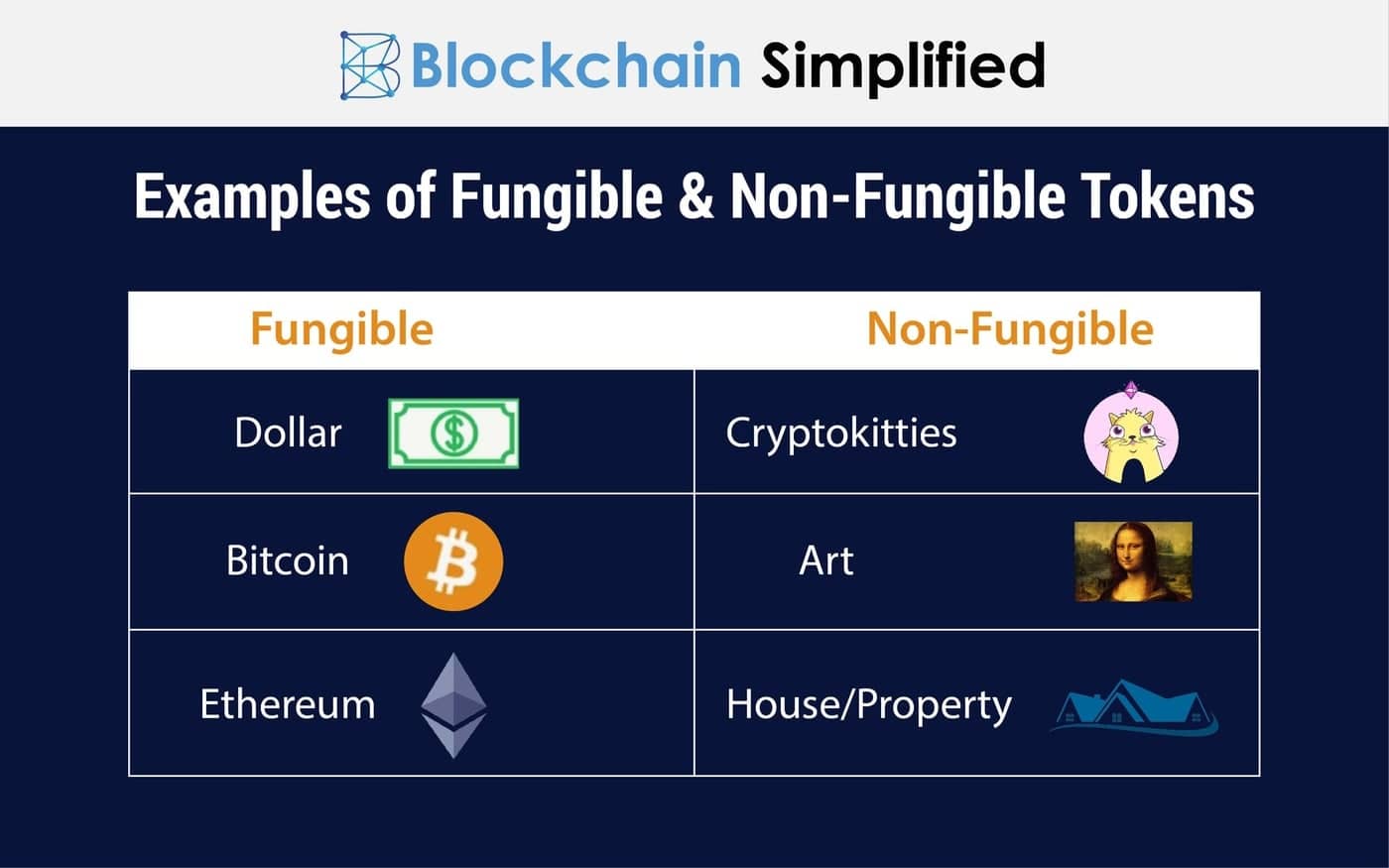
Non-fungible means that something is unique and cannot be substituted for another item in its category. For example, you cannot trade your house for another house. It requires a transition of ownership.
The NFT concept started in 2012 but only recently became popular in 2017 with the introduction of CryptoPunks and CryptoKitties. NFTs are a form of digital art like vector graphics, GIFs, and videos; however, they are not for public use. You cannot simply download them for free or take screenshots of them for ownership. They’re owned exclusively by whoever purchased the rights to them.
Creating an NFT requires several steps — most importantly deciding what creative work to make into an NFT.
Another critical thing to note is that NFTs must be in a digital file format such as an image file (painting, photograph) or an audio or video file (song, short film). It can even be a collection of images or a piece of code from a game or program.
More on those details later. First, let’s take a look at some of the most popular NFTs of all time for some inspiration.
Examples of Popular NFTs
There’s no doubt that NFTs are extremely popular, and for good reason. They can represent anything from a piece of art to a digital collectible to company stock.
Here are some examples of NFTs currently traded on OpenSea and ranked by all-time highest volume traded as of July 2022:
1. CryptoPunks
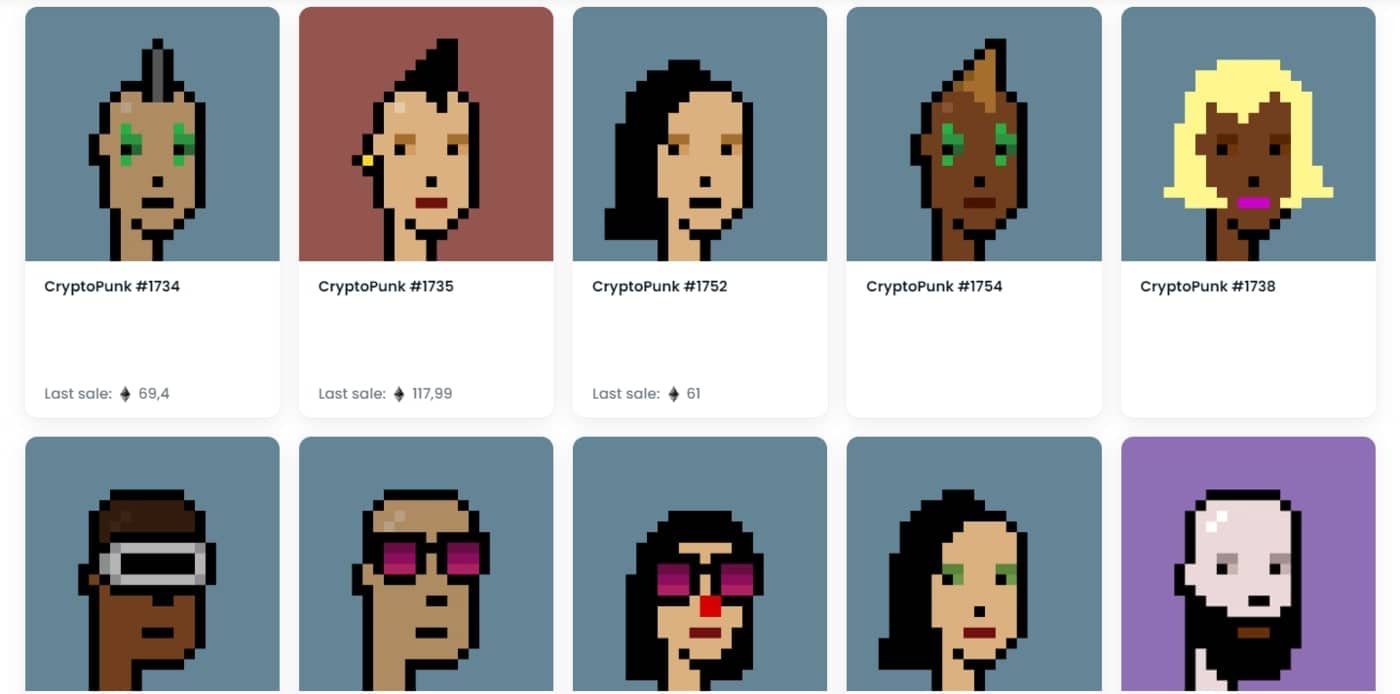
The CryptoPunks are 10,000 unique and randomly generated characters. There’s no way to predict the appearance of a specific CryptoPunk since the blockchain randomly generates it.
When they were initially released in an Ethereum smart contract, anyone could claim one for free — however, they were quickly claimed due to popularity. CryptoPunks must be purchased from another person on the blockchain. You can buy and sell punks on the OpenSea market.
2. Bored Ape Yacht Club
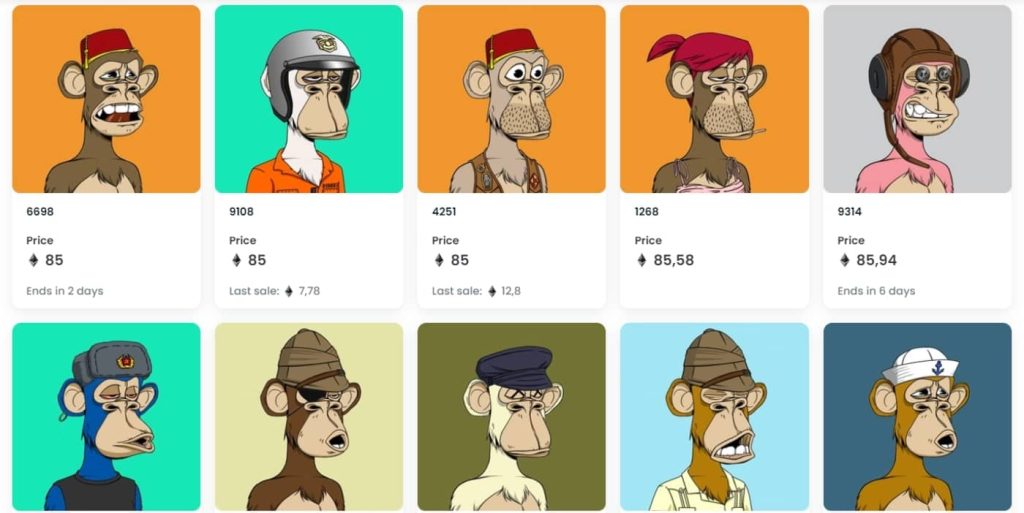
Bored Ape Yacht Club (BAYC) is a collection of 10,000 unique digital collectibles living on the Ethereum blockchain. A Bored Ape acts as a Yacht Club membership card and allows you access to members-only benefits. The community can unlock future areas and perks through roadmap activation.
Each Bored Ape is unique and generated from over 170 possible traits, including facial expression, clothing, and accessories. That said, some are rarer than others.
3. Mutant Ape Yacht Club
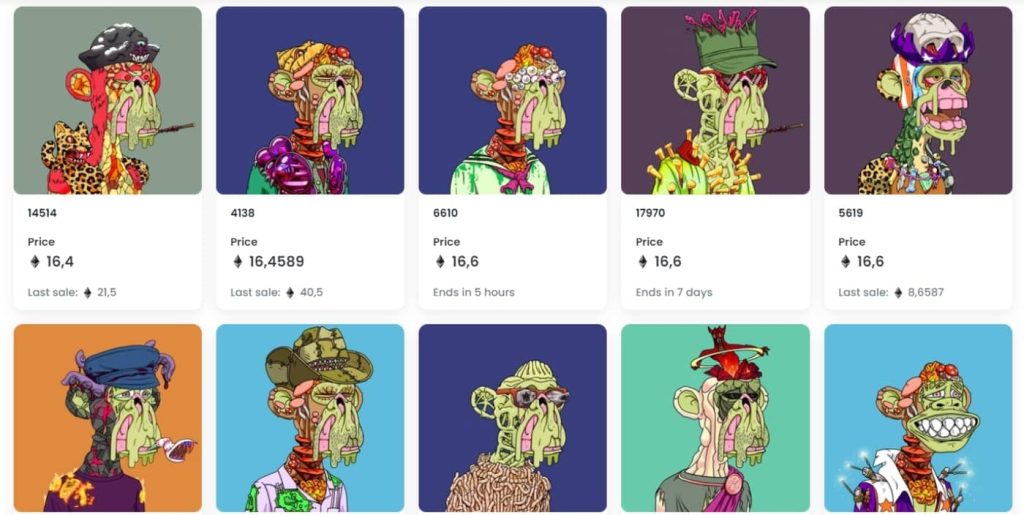
The Mutant Ape Yacht Club (MAYC) is a derivative of the famous Bored Ape Yacht Club found on the Ethereum network. You can receive a Mutant Ape by exposing a BAYC NFT to a “Mutant Serum” or you can mint it during the public sale.
The main perk of holding an MAYC is social status. For example, many people choose to make their Twitter profile picture their MAYC, demonstrating their experience and exposure in the DeFi space. This NFT is also quite popular amongst Instagram influencers.
4. Otherdeed for Otherside
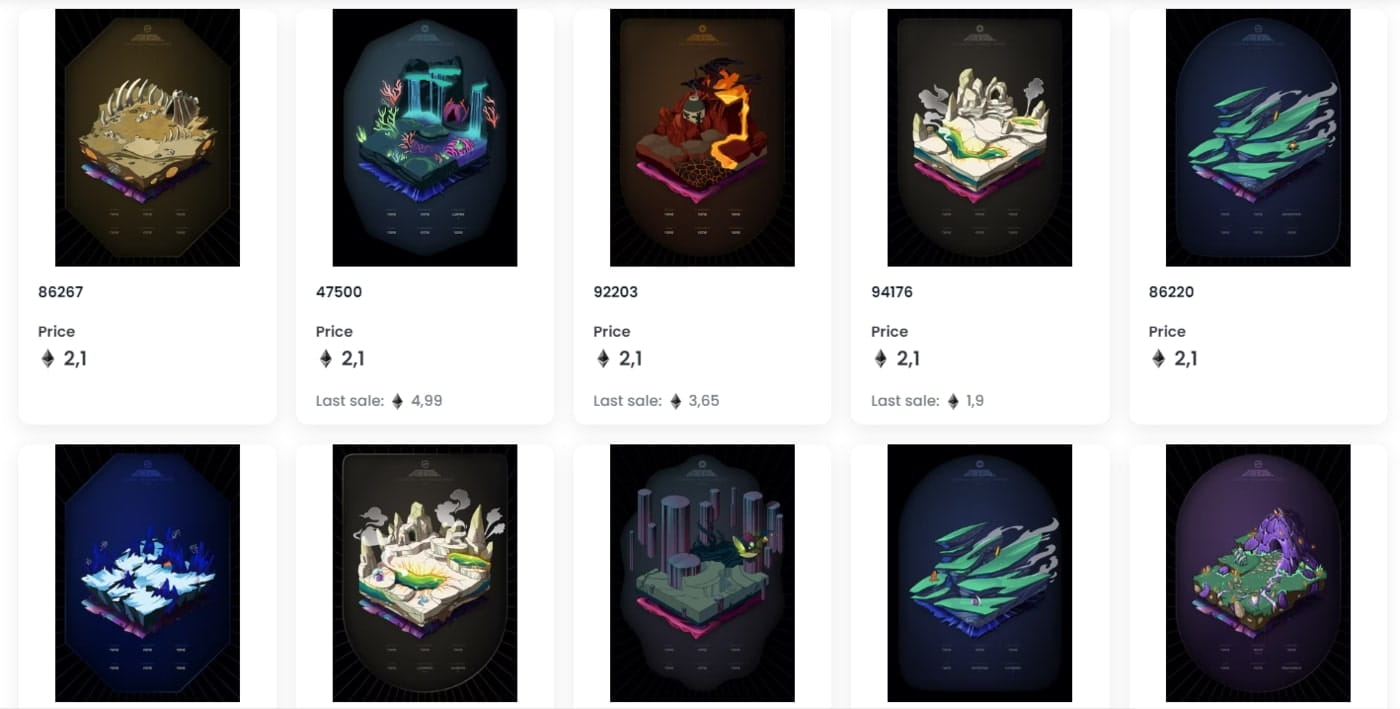
Otherside is a gamified metaverse currently under development. Think of it as where the players own the meta world, and NFTs can become playable characters where thousands can play together in real-time.
Owning an Otherdeed NFT is your key to the Otherside, where you have access to stake a plot of land. There’ll be 200,000 Otherdeeds in total. The first 100,000 were available on April 30, 2022, after which they’ll be exclusively awarded to people who hold Otherdeeds and contribute to developing Otherside.
5. Art Blocks Curated
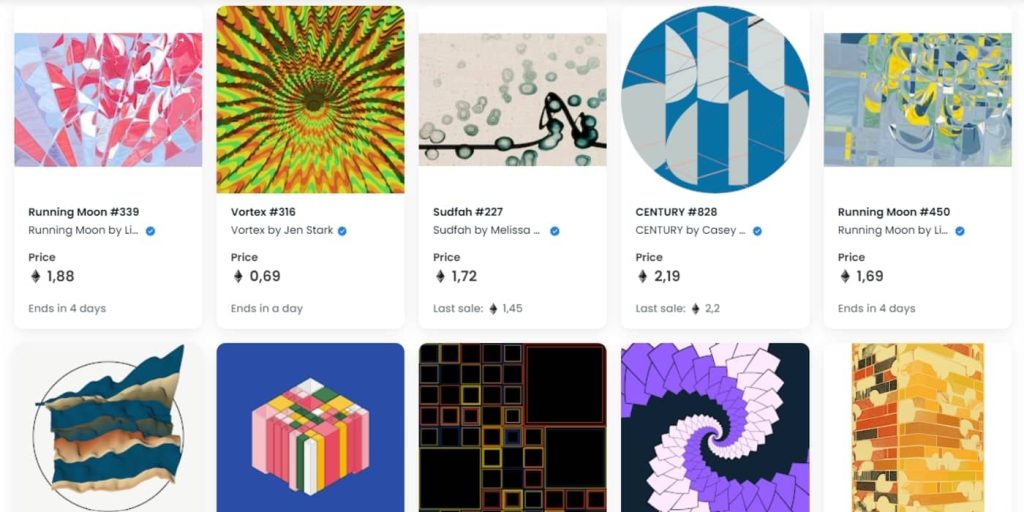
Art Blocks is a community for digital artists, collectors, and enthusiasts to share their visions. Art Blocks aims to disrupt the modern art world by creating a new paradigm for the creation and ownership of art.
Their platform lets collectors participate in an artist’s vision by watching the computer-generated artwork take shape.
The Art Block platform allows users to purchase customized generative art that can be accessed through a smart contract on the Ethereum blockchain. The algorithm creates different pieces of art – an image, 3D model, or an interactive piece. Users can choose a style and buy it with Ethereum.
5 steps to create your own NFT
Now that we have reviewed the most popular NFTs of all time let’s see how to create an NFT.
Time to get your creative juices flowing.
Let’s review the necessary steps to create your very own NFT.
Step 1: Brainstorm an idea
Before starting your project, you’ll need to develop the concept and design for your NFT.
First, think about what things are important to you — are there current products that don’t work exactly the way they should? What is something you wish existed in life but doesn’t yet exist? Are there any problems within your community that need solving?
Once you have a solid idea in mind, take some more time to brainstorm as many ideas as possible. Quantity over quality is essential in this beginning stage of brainstorming. It’ll help make sure that no matter how busy or stressed out you become later in the development and tokenization processes, at least one good idea remains.
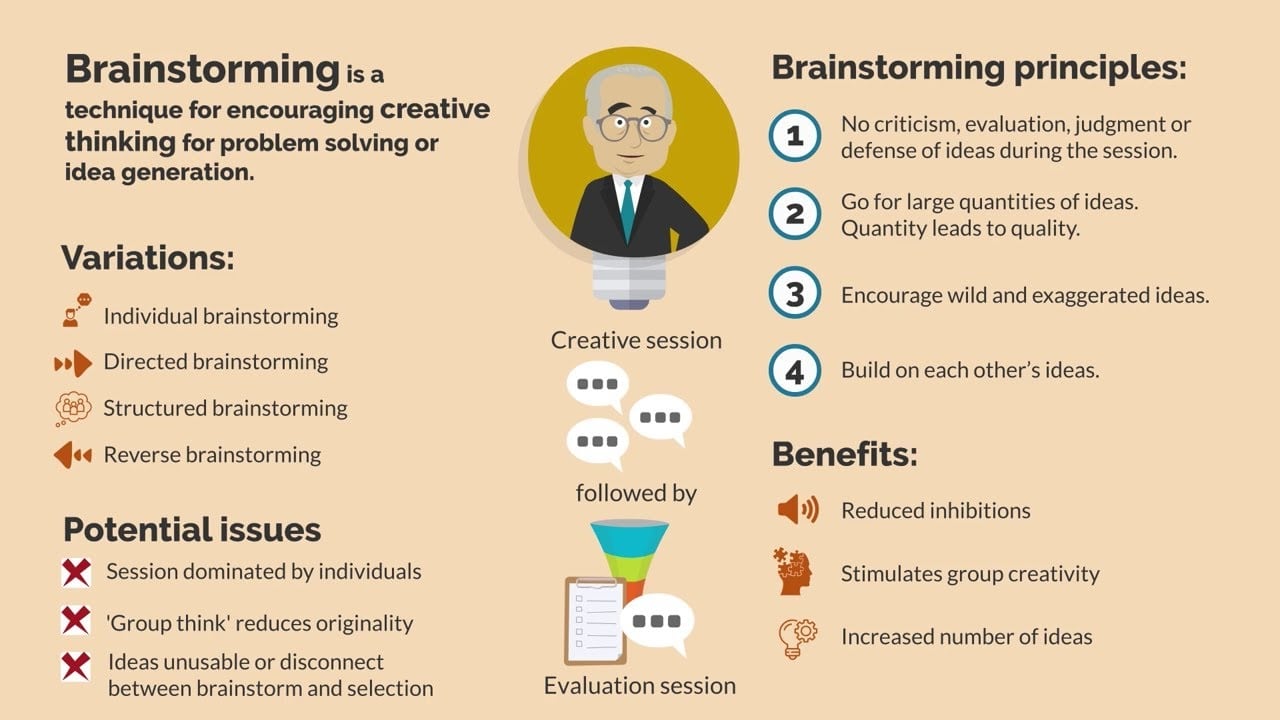
One of the most important things about creating an NFT is ensuring it isn’t too similar to another one already in existence (or in development).
The goal here is not so much about being original as it is to avoid redundancy. If someone has already created a similar NFT with similar functionality and assets, then yours might not be useful enough for people to own tokens from both projects.
Step 2: Design the NFT
Now the fun part.
You can create your art in any way you like, with any tools, and on any medium. If you wish to design and convert your digital creations easily, Quicktools by Picsart is a great solution.
Again, the only thing that matters here is that it’s original and high-quality. Keep in mind that if someone else has already created a similar work of art to what you’re creating, it won’t be as marketable and could lead to copyright issues.
To be clear, don’t use copyrighted or trademarked images in your NFTs. These are protected and owned by others with intellectual property rights. The last thing you want is a lawsuit on your hands.
Once you’ve finished with your design masterpiece, hilarious GIF or profound video, there’s one last step before you can move on. This step involves a file format conversion.
The most common NFT file formats include:
- JPG
- GIF
- PNG
- MP4
- WebP
- MP3
Also, keep in mind that file size matters. Official NFT marketplaces have certain requirements: OpenSea accepts file sizes of 40 MB, and Rarible only accepts 10 MB files.
Size impacts the speed of the platform and the quality of the NFT.
Step 3: Pick a blockchain
Before you can begin selling your NFT, you should understand a few of the basics about cryptocurrencies and blockchains.
Cryptocurrency uses cryptography to secure transactions and control the creation of new units. It’s also called virtual currency or digital currency.
You can purchase crypto through trading apps and then transfer them directly to a digital wallet of your choice (Coinbase Wallet, Metamask, or Trust Wallet, to name a few).
Blockchain is the technology that allows for the creation of non-fungible tokens.
It is a distributed ledger, which means that each transaction is recorded on a block and added to a chain of other blocks, generating a record of all transactions.

The blockchain is secure and transparent. Anyone can see what’s going on with the data, and everyone involved in maintaining it can verify its accuracy.
There are a lot of different blockchain platforms that you can choose from. You can make your NFT on any of them, including Ethereum and Solana. The choice is up to you.
Each platform has its pros and cons.
- Ethereum: The most popular NFT blockchain and home to numerous NFT marketplaces (OpenSea) and NFT projects (all of the examples provided earlier in this article). Unfortunately, Ethereum is very expensive and requires a lot of energy per transaction.
- Solana: A great blockchain choice for NFTs because the transaction fees and mining times are very reasonable. However, Solana isn’t as widely used as Ethereum — fewer available NFT marketplaces and people trading on the blockchain.
Step 4: Open and fund a digital wallet
After you’ve created your NFT and decided on the suitable blockchain for you, it’s time to make a digital wallet where it’ll be stored.
You can store your NFTs on any digital wallet that supports ERC-721 tokens. The most popular choice is an Ethereum wallet. You’ll also find many other options in the dApp browser of MetaMask or Trust Wallet.
Most digital wallets are browser-based and more prone to cybersecurity risks. Investing in a hardware wallet that allows you to store your private keys offline to manage your crypto and NFT assets is wise.
Once you’ve created a wallet, it’s time to buy some cryptocurrency so that you can pay the gas fees when minting your non-fungible token. The best way to do this is to create an account with a reputable exchange like Coinbase or Binance.
Thankfully, this process is quick and can be done right from your smartphone.
Step 5: Upload to an NFT marketplace
Once your NFT is ready to mint and you have the funds to pay the gas fee, it’s time to upload it to an NFT marketplace. Many platforms allow users to create and upload their own NFTs, like OpenSea and Rarible.
Once you have a marketplace account set up, follow these steps:
- Upload an image of your artwork or design
- Enter a title for your work
- Provide an external link to a landing page the describe your project in more detail
- Write a brief description explaining what the art represents
- You’ll be able to make your NFT unique by customizing it further with added fields.
- Set pricing by using a fixed-price, timed auction, or an unlimited auction
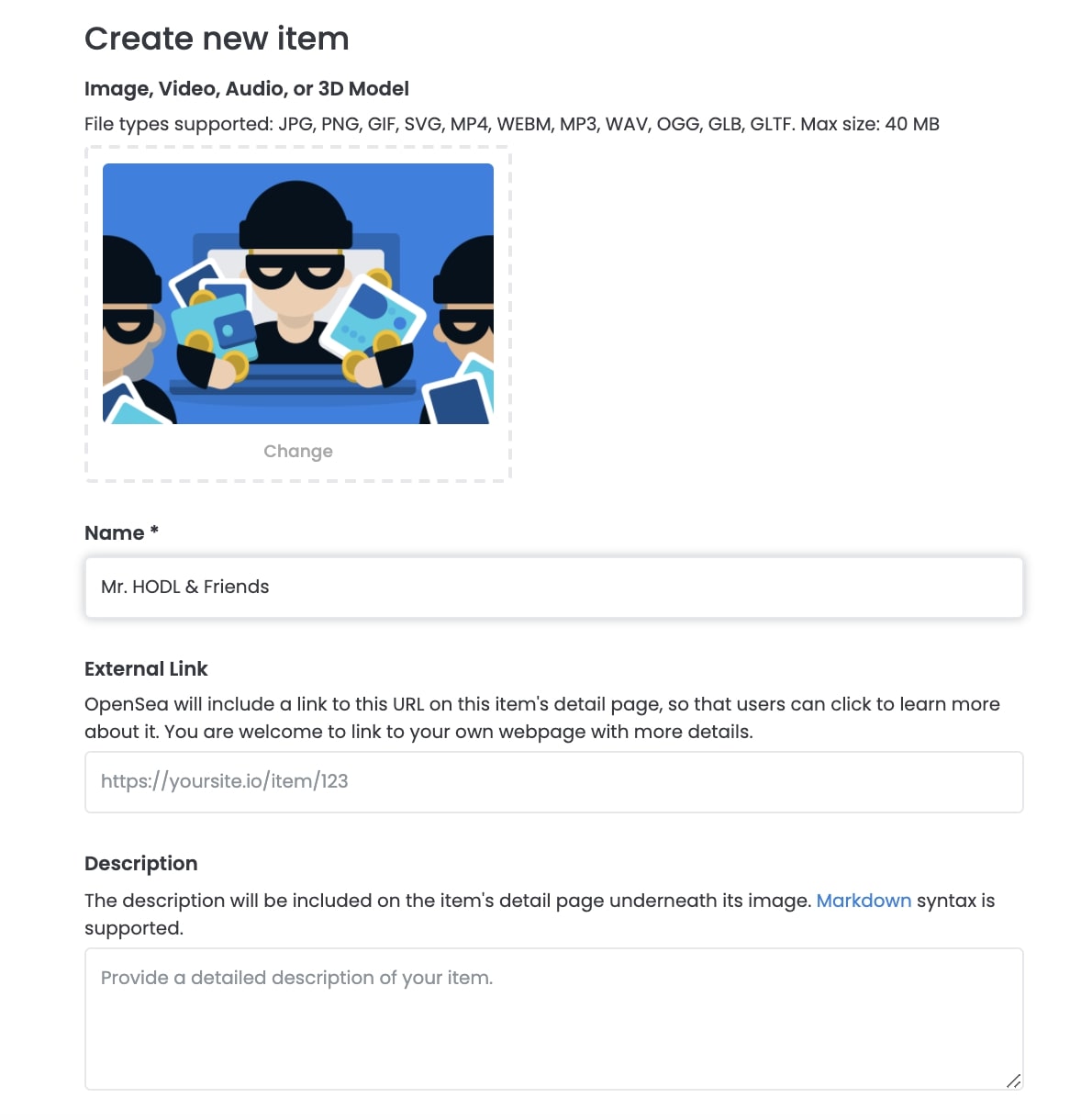
And voila. Your NFT is minted and can be sold to other users on the marketplace.
How to use NFTs to generate brand awareness
You have successfully minted your NFT. So now what?
Are there any practical use cases for a custom NFT other than landing a nice profit in the right market conditions?
Yes, of course. One of the best use cases for a custom NFT is to generate brand awareness for your business.
This strategy is becoming increasingly popular as NFTs and crypto become more accessible to everyday users. And it can genuinely help businesses pivot in times of need by focusing on brand management.
As a business, you can sell NFTs representing shares in your company that mimics traditional stocks. This can help you attract a new set of tech-savvy investors that your business may not usually have access to. For example, if you’re considering selling your company due to a lack of funding, NFTs may be an excellent choice for you.
On the other hand, you can also use NFTs to build hype around a new product and generate brand awareness.
For instance, let’s look at Stack’s NFT strategy. Stack is a powerful browser tool that helps you organize web pages and windows on your computer screen to optimize your workflow and increase efficiency.
This type of SaaS tool constantly needs updating to remain current and add new features while maintaining a streamlined design.
To help build up the buzz for the next release, they’re giving away a well-designed NFT to users who purchase a lifetime membership of their browser tool. To help with anticipation, they have yet to release what the NFT looks like. Since NFTs are unique, collectible, and valuable, using them as a promotional tool is forward-thinking and can get people talking.
Besides building brand awareness, companies can use NFTs to increase sales, improve conversions, and even test out if there’s a real market for products that still don’t exist physically.
Wrapping up
The process can seem very intimidating if you’re looking to create your own NFT.
But don’t worry. Most people can create their own NFTs. You don’t need to be a designer, a programmer, or a blockchain expert.
And if you are a marketer or business owner, don’t sleep on the power of NFTs to promote brand awareness. All you need is one idea that sticks and some creativity.
A few steps will make it easier and faster for you to dive in:
- Brainstorm an idea that resonates with you, and then create some digital content around it
- Decide which blockchain would be best suited for your token by checking out their available features
- Upload them onto an NFT marketplace like OpenSea, Rarible, or Coinbase NFT
As the metaverse continues to advance, businesses will find new ways to use NFTs to keep in touch with customers, generate brand awareness, and build closer relationships with them.
The synergy between NFT and marketing is a force to be reckoned with. Happy minting.






